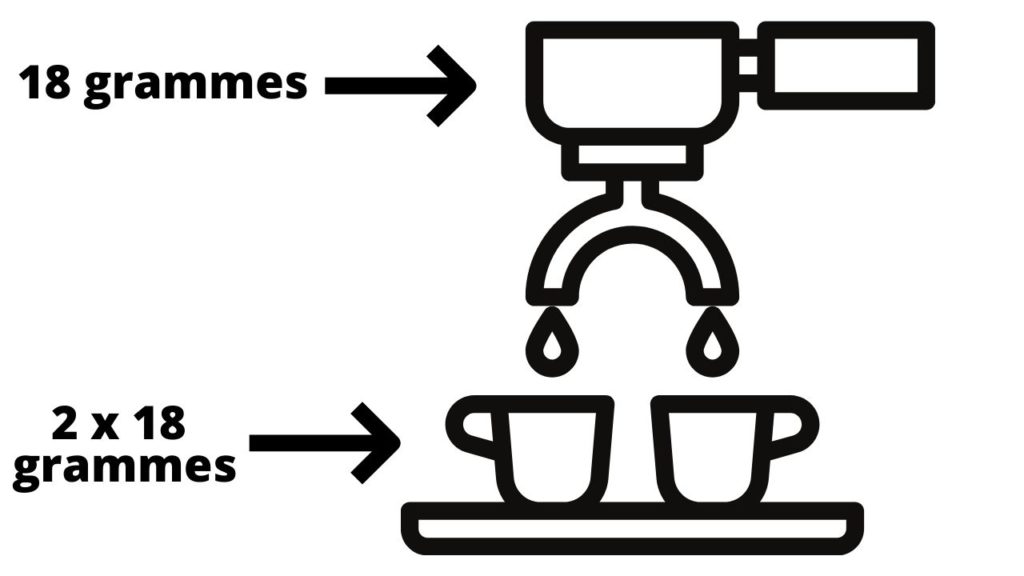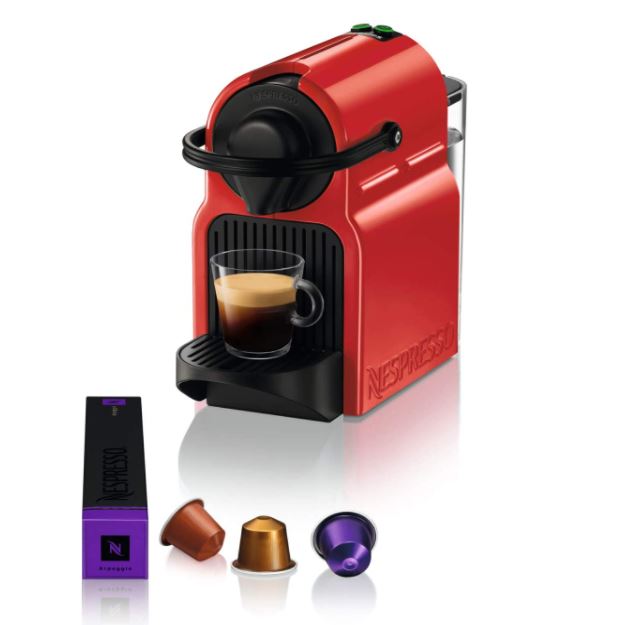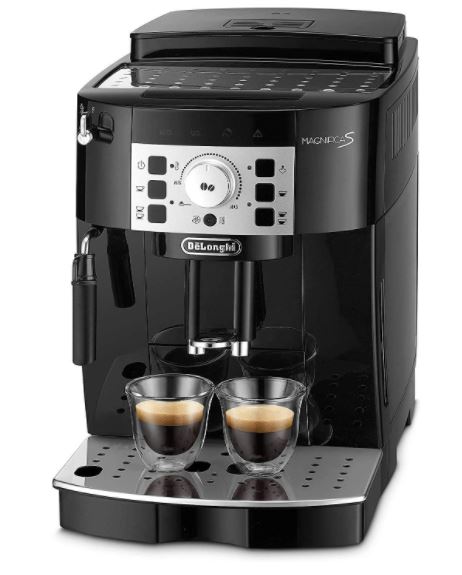Espresso is one of my favorite extraction methods, although in my early history with coffee I only drank filter coffees. I found it too full-bodied, too short. I liked to take my time and enjoy a mug of coffee.
Today, however, I drink it every day. Espresso has become my little pleasure and I have learned to tame it and above all, to taste it!
What is an espresso (or espresso)?
Before getting to the heart of the matter and to remove a possible questioning while reading this article: yes, we can speak of an espresso as much as an espresso, with an “s” ( cf. blog post about it ).
Characteristics of an espresso
Even someone who has never had one is able to recognize an espresso when they see one passing by! All restaurants, bars and coffee shops offer it and serve it in a very small cup , usually with a capacity of 5 cl .
We particularly appreciate its power. We often describe an espresso as being full-bodied or bitter, but be careful not to generalize: an espresso is not necessarily bitter , some offer acidulous notes!
What we also love about an espresso is the layer of foam on the surface of the cup. This is called espresso crema . The latter can be more or less thick depending in particular on the variety of coffee. A beautiful crema does not necessarily reflect the quality of an espresso.
As for the exact quantity of an espresso, I couldn't give you a single number. Depending on the coffee shops, habits and individual tastes, the size of an espresso varies between 15 and 50 ml .
To make it simple, we can take into account the following correspondences:
- 1 espresso = 30ml
- 1 Ristretto = 15 ml
- 1 Long = 45 ml

I will soon make an article dedicated to the ristretto and a second dedicated to the lungo.
An original mode of extraction
It was in 1884, in Turin, Italy, that the very first espresso coffee was officially made . At least, it was on this date that the patent for an espresso machine was filed by Angelo Moriondo, then at the head of a hotel and a restaurant.
It was when he noticed that his customers were increasingly in a hurry that he had the idea of a machine capable of making coffee in just a few seconds . He therefore created his first machine and filed his patent.
Angelo Moriondo carefully kept the few machines manufactured for his customers. He
did not launch large-scale marketing. The espresso machine then underwent various improvements to become the one we know today.
To put it simply, in order to extract an espresso , it is said that you need a pressure of 9 bars . Water is passed through a grinding cake (ground coffee), which will first be placed in a filter. The filter containing the coffee is placed under the sprayer of the machine which will distribute the water evenly, over the whole of the ground coffee and this, with sufficient pressure to extract the best from the coffee .
How to make a good espresso
However, it is not enough to buy the first espresso machine to make an espresso worthy of the name. Many criteria come into play when choosing a machine. In addition, good technical knowledge is required.
Choice of machine
There are broadly three main categories of espresso machines. Of course, each of these categories can also be subdivided into subcategories, based in particular on different operating mechanisms or materials. But in this article, we will simply discuss the three main families of espresso coffee makers :
- Capsule / pod machines: These machines do not allow you to obtain espresso as such. Indeed, their operation is not comparable to other machines and the result in cup has nothing to do with a real espresso for professionals and great coffee enthusiasts. However, it is an interesting solution for someone who appreciates an espresso-type drink, without the fuss.
- Bean machines (automatic) : This type of machine makes it possible to obtain a real espresso, unlike capsule machines. Once the machine is set up properly, espressos can be really, really good. The advantage here is that you can drink freshly ground coffee (so much better than coffee already ground or in a pod), without investing in a coffee grinder.
The elements for a successful espresso
There is therefore, as we have just mentioned, the choice of the espresso machine which is important in the production of a good espresso . Besides, not all manual machines are created equal and generally you have to pay the price if you want to be able to make the best espresso extractions .
For my part, I have the Aircraft AC-700 model which allows me to make good espresso. However, I cannot adjust the water temperature, which as we will see can be problematic. However, this first machine suits me completely for the moment, I am fully satisfied 🙂
The second element that comes into play is indeed the barista or at least the person who makes the coffee, his knowledge and his experience in the matter. A beginner, who has never made an espresso before, will necessarily make mistakes and his coffees will not be perfect. But don't worry, by following good advice and with a little practice, making a perfect espresso is within everyone's reach!
Here are the 4 essential settings (+1 measure) that a good barista must know (in addition to having quality coffee available).
The grain size of the grind (or grind size)
Too fine a grind could prevent the water from passing through the coffee well. This results in a coffee extraction time that is too long (more than 30 seconds). The coffee then risks being over-extracted and bitter.
On the contrary, too coarse a grind causes too little resistance and the result is an under-extracted, too acidic or bland coffee.
The dose of coffee
It is accepted that to make an espresso, one uses between 8 and 10 grams of coffee . For a two-cup filter, we use between 16 and 20 grams of coffee.
The quantity of coffee also affects the time and quality of extraction. Depending on the coffee used, we recommend adding more or less coffee.
For example, for a dark, very roasted coffee, a smaller quantity of coffee will generally be used than for a lightly roasted coffee. Similarly, a freshly roasted coffee will need a smaller dose of grind to turn out in a cup, than a coffee that was roasted 3 or 4 months earlier.
Temperature
Although some machines do not allow you to set the water temperature exactly, this parameter is normally important for a successful extraction.

Just like for the quantity of grind, each coffee has its specificities which should encourage us to use more or less hot water.
Generally, a coffee is extracted between 88 and 94 degrees . Heavily roasted coffees should be extracted at lower temperatures than lighter roasts to avoid burning the coffee. Likewise, the temperature should be adapted to the amount of grind used, since the thermal drop of water is not the same at 16 or 20 grams of coffee.
The quantity in cup (input/output ratio)
The last adjustment for a successful espresso is the “in and out” ratio, in other words, the ratio between the coffee used at the entrance to the extraction (the quantity of grinds) and the quantity of coffee obtained in the cup.
For an espresso, the ratio is 2 . That is to say, when you use 18 grams of grind (in a 2-cup filter), you get 18 grams of coffee per cup, or 36 grams in total.

For a ristretto, the ratio is 1 (18g of coffee as a starter, 18g in cups) and for a lungo the ratio is 3.
Please note, it is commonly accepted that 1g of coffee in a cup = 1.5 ml in volume , due to the crema which is more or less present in the cup. Therefore, for an espresso made with 9g of grind, it is not 9ml of coffee that we will obtain in a cup, but 13.5ml (i.e. 9g).
The ideal way to measure all this is to opt for a special espresso scale .
Extraction time
To conclude on the elements to take into account in the realization of your coffee, I would like to talk to you about the extraction time . This is a particularly useful measure. It allows you to check if you are on the right track and if your settings seem to match your coffee or not. It is considered that the ideal time to extract an espresso is between 20 and 30 seconds .
If (with 18g of coffee) in 25 seconds you only get 10 grams of coffee in a cup, you will know that there is a problem with one or more of your settings.
Also, be aware that if you like lungo and you tend to let the coffee run a little longer than 30 seconds for example, you still have to be careful not to burn your extraction. The longer the time the grind is subjected to hot water, the more likely you are to burn your coffee and end up with a bitter result in your mouth.
Discover Bean machines (automatic)




